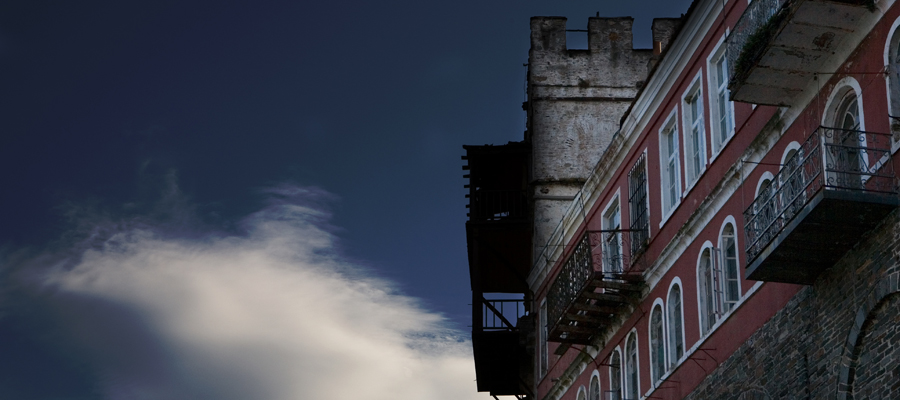Vatopediou monastery
The building complex is located in the middle of the northeastern side of the Athonite peninsula, near a bay 3 hours from Karyes. The dominant in size and structure monastery has one of the richest archives in Athos. Despite the fact that a part of it has been published, its early history remains a mystery. According to a probably untenable tradition, its founder was Theodosius the Great and it is named after the miraculous rescue of his son inside a burning bush. According to another but close to real tradition, the founders were Athanasius, Nicholas and Anthony brothers who came from Andrianoupoli in 972 and rebuilt the monastery. However, the first written testimony of its existence is documented in 985, in a letter of the “First” Paul, which is signed by abbot Nikiforos.
The monastery flourished after the 11th century, during a time when many other monasteries were annexed and turned into its parts. Vatopediou monastery, together with the Iviron one are ranked second in hierarchy, just after Megisti Lavra. A 1292 Golden Bull of Andronicus II is a characteristic of the wealth being gathered. According to it, the monastery owned dependencies and “monydria” (small monasteries) in several places, the proceeds of a feast, a pasture for cattle and the island of Ammouliani.
It also played a significant role in the expansion of the Hesychasm movement, since Gregory Palamas became a monk in its Catholicon. The building of new structures was made possible by 12th century donations of Simeon, the King of Serbia and his son Savvas. It had been looted many times by Catalans and Turks and fell into financial difficulty. Byzantine emperors, Balkan rulers, Tsars of Russia and sometimes rulers of the West always helped with its restoration.
The triconch domed Catholicon (10th century) is dedicated to the Annunciation of Virgin Mary, with typology based on that of Great Lavra’s. It was rebuilt in the 14th century and was added an outside, open, two-storey narthex in the 17th century. The murals located inside belong to the Macedonian school and are made in 1312, and the only mosaics preserved in Athos located also inside are made in the 11th and 14th centuries. The wooden carved reredos made in 1788 is of exceptional art and replaced the original marble one. In addition, the floor has some exceptional marble inlays. The bell tower made in 1427 is one of the tallest in Mount Athos and has eight bells.
The monastery is the only one in Mount Athos following the Gregorian calendar. The oldest manuscript of the byzantine music (1106), rare geographic works of Ptolemy, Stravonas and Pausanias, two psalters with thumbnails, and an illustrated Octoechos are some of the 1.700 manuscript codes in its rich library.
Text: Dr. Antonios G. Dikaios/ Theologian – Environmentalist.






